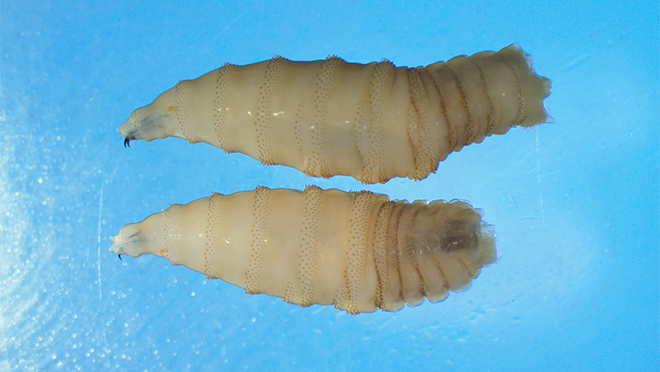New World Screwworm Myiasis
New World Screwworm (NWS) myiasis is a parasitic infection caused by the larvae of the screwworm fly, Cochliomyia hominivorax. This condition primarily affects livestock but can occasionally infect humans. The recent detection of a human case in Mexico has raised awareness of this infection, which is prevalent in South America and the Caribbean.
What Is New World Screwworm Myiasis?
NWS myiasis occurs when the larvae of the screwworm fly infest warm-blooded animals. The female fly lays eggs on open wounds or mucous membranes. These eggs hatch into larvae that burrow into the tissue, feeding on living flesh. This infestation can lead to severe tissue damage and pain.
Symptoms of Myiasis
Symptoms of NWS myiasis include:
- Presence of maggots around or in wounds.
- Unhealing skin lesions or sores.
- Worsening pain and bleeding from sores.
- Foul-smelling odour from the affected area.
- Possible secondary infections causing fever or chills
Symptoms can vary in severity but are generally very painful.
Risk Factors for Infection
Individuals at higher risk include:
- Those travelling to endemic areas in South America and the Caribbean.
- People with open wounds from cuts, scratches, or surgeries.
- Individuals with weakened immune systems.
- Those who spend time outdoors or around livestock.
How NWS Myiasis Spreads
The spread of NWS myiasis begins when a female screwworm fly lays eggs on open wounds. The smell of the wound attracts the flies. Even small wounds can attract flies. A single female can lay up to 3,000 eggs during her lifespan. Once the larvae hatch, they burrow into the tissue, leading to infestation.
Preventing NWS Myiasis
Preventive measures include:
- Keeping open wounds clean and covered.
- Using insect repellents registered with the EPA.
- Wearing protective clothing such as long sleeves and pants.
- Sleeping indoors or in screened areas.
These actions can reduce the risk of infestation.
Treatment Options
If NWS myiasis is suspected, immediate medical attention is essential. Treatment involves the physical removal of larvae from the infected tissue. This may require surgical intervention. Self-removal of maggots is not advised due to potential complications.
Month: Current Affairs - April, 2025
Category: Environment Current Affairs





